Learning about Italian Cuisine and its Cultural Importance During a Semester in Florence
Italian cuisine has stolen the hearts and filled the stomachs of diners worldwide. The simplicity of ingredients, freshness, and distinctiveness one can taste from authentic Italian cooking is unique and memorable. However, it is less about the importance foreigners like myself place on it and more about how Italian cuisine weaves its way into everyday life and culture in the country.
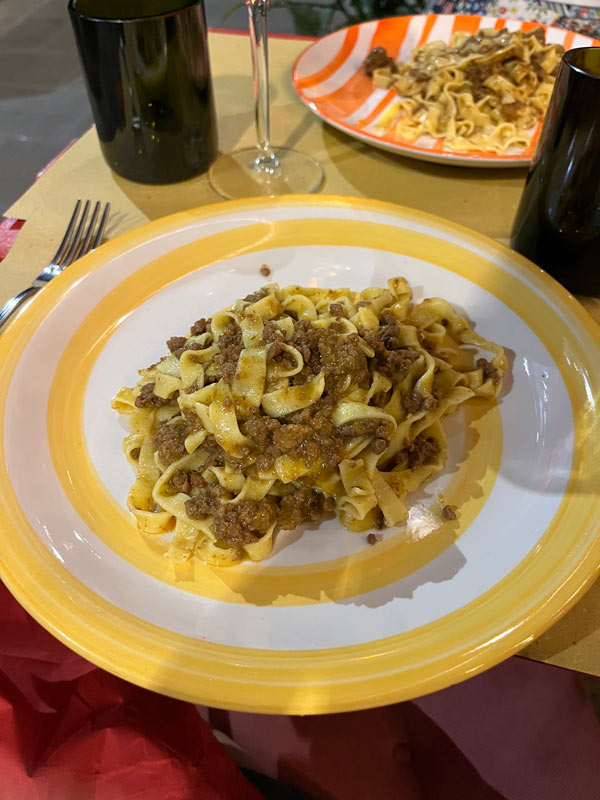
An authentic Bolognese dish, delicious and simple, from Trattoria Mago Maga.
Italian cuisine is a staple of Italian culture, and it is essential to experience and understand it to appreciate such a culturally rich country. These photos show a few of the many delicious meals I have had while studying abroad in Florence. At the same time they also help highlight the importance of quality and freshness, simplicity, and regional differences characteristic of Italian foods.
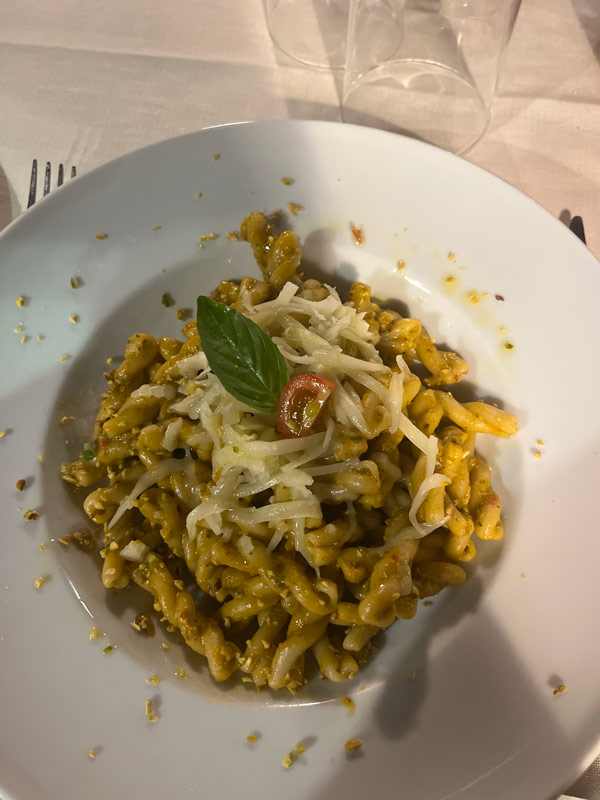
A pesto pasta dish from Arà. While they are known for their cannolis, their wonderful dinner dishes make a perfect precursor!
Fresh Food
First, Italian cuisine places a significant importance on the freshness of the food. For example, the Sant’Ambrogio market in Florence is a familiar spot for Italians to get produce. It is only open from 8am-2pm, opening with freshly-picked produce and closing before any of these products lose their freshness.
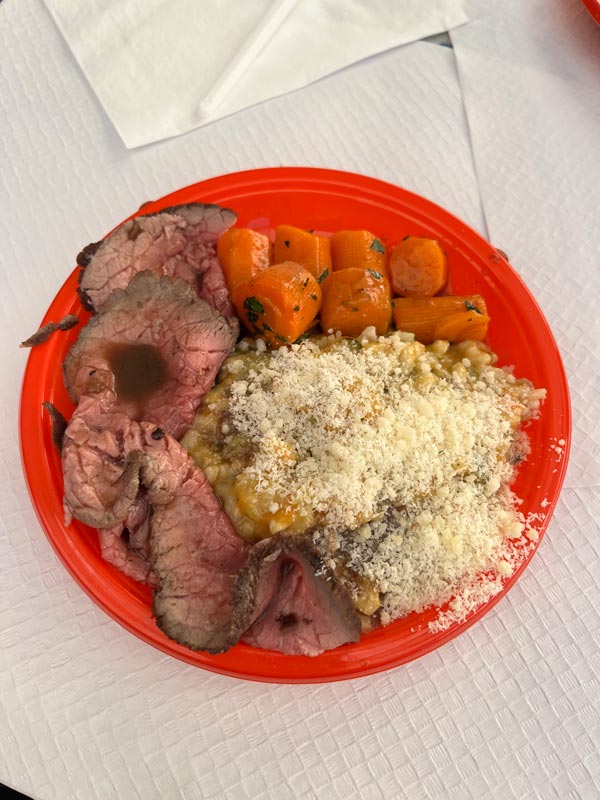
At the local markets, certain vendors make fresh lunches every day. Here is a delicious example of a Sant’Ambrogio market plate with roast beef, risotto, and carrots.
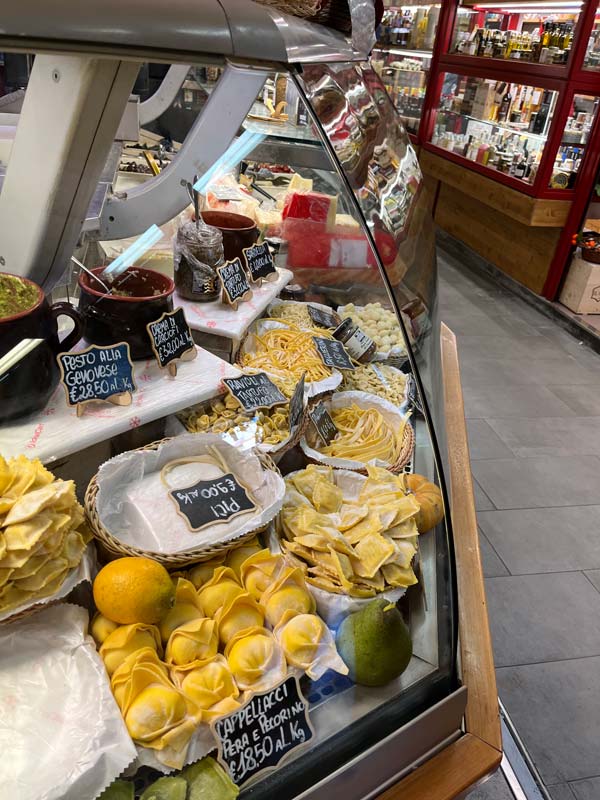
Here is an example of the fresh pasta made every day by market vendors. The ravioli is delicious and stuffed with meats, fish, vegetables, or cheeses.
The markets have everything you could imagine: fruits and vegetables, unique pastas, meat, fish, and other pantry and refrigerator staples such as olives, capers, spices, sauces, and jams. As a student coming from the United States, the idea of freshness often coincides with high prices. However, in Italy, the products sold are affordable and of the highest quality.
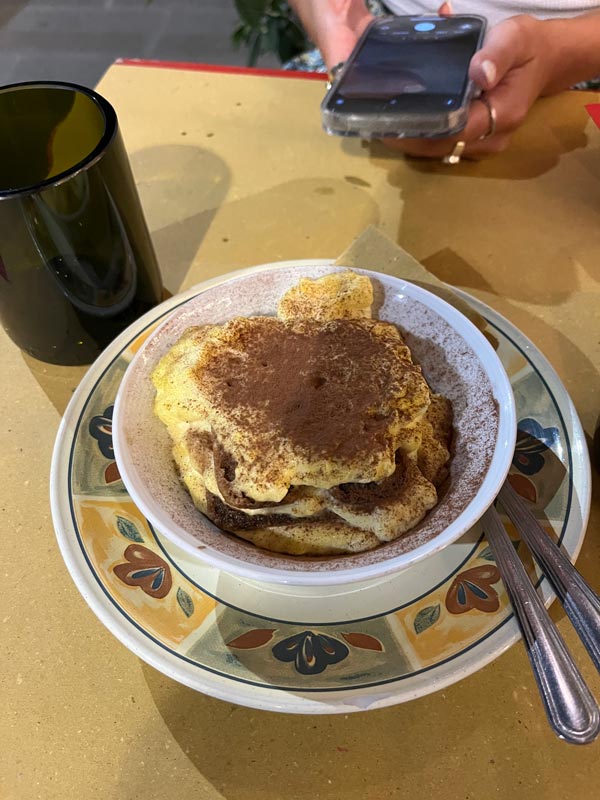
A delicious tiramisu from Trattoria Maga Magò, resembling a more classic recipe.
Simplicity
Simplicity is another critical component of Italian cuisine. Authentic Italian cooking uses only a few ingredients in dishes, making the elements stand out and highlighting their original flavors. Most dishes I have had consisted of five or fewer ingredients.
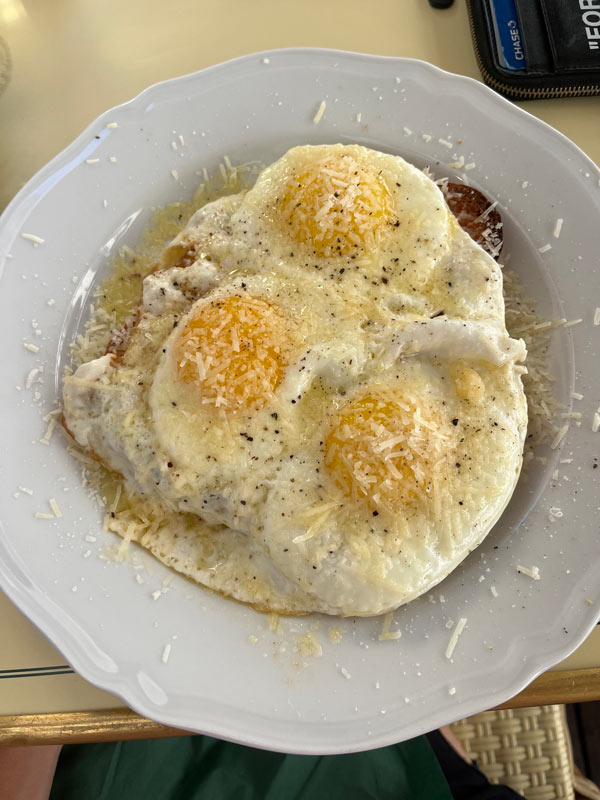
Simplicity is key when it comes to one of Florence’s iconic restaurants, Cibrèo Cafè. Farm fresh eggs with Parmigiano Reggiano over Tuscan bread.
Regional Differences
Thirdly, regional differences play a role in understanding Italian cuisine. Certain ingredients and meals are unique to their area because of the varied landscape of the country.
A way to highlight this is through tasting different meats. In my Italian Food & Culture Class (which I have to thank for my increased appreciation and understanding of Italian cuisine), we tried various meats at the Central Market. The Prosciutto di Parma tastes cheesier than other prosciuttos because the pigs are fed whey. Regionalism is so essential that they have specific products with regional qualifications, labeling them DOP (Protected Designation of Origin) certified.

Cured meats are very important in Italian cuisine, and here my CEA CAPA professor took us on a field trip to the Central Market to taste different types of prosciutto and salami from different Italian regions.
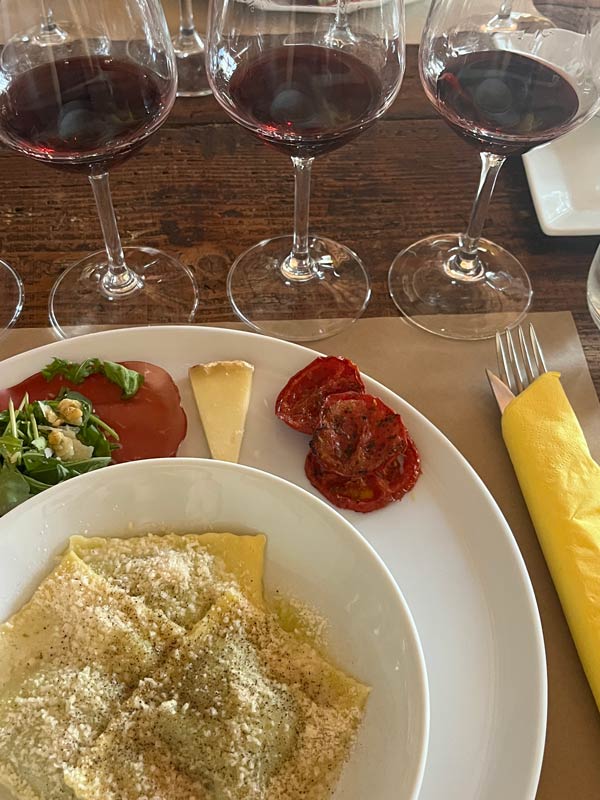
La Lastra Winery in Siena, Italy. Regional Chianti wines paired with fresh ravioli, beef, cheese, and garden tomatoes.

Florentine tiramisu from Il Giova. This dessert is a local take on the classic dessert.
All of these components of Italian cuisine were unknown to me before arriving in Florence. Still, now, through my CEA CAPA course and my own experiences, I have been able to appreciate Italian cuisine further and, through this, increase my understanding and appreciation of Italian culture.

You can’t experience Italian cuisine without enjoying some amazing gelato. Rivareno is my favorite, but there are many great spots such as Vivoli and Cantina del Gelato!








